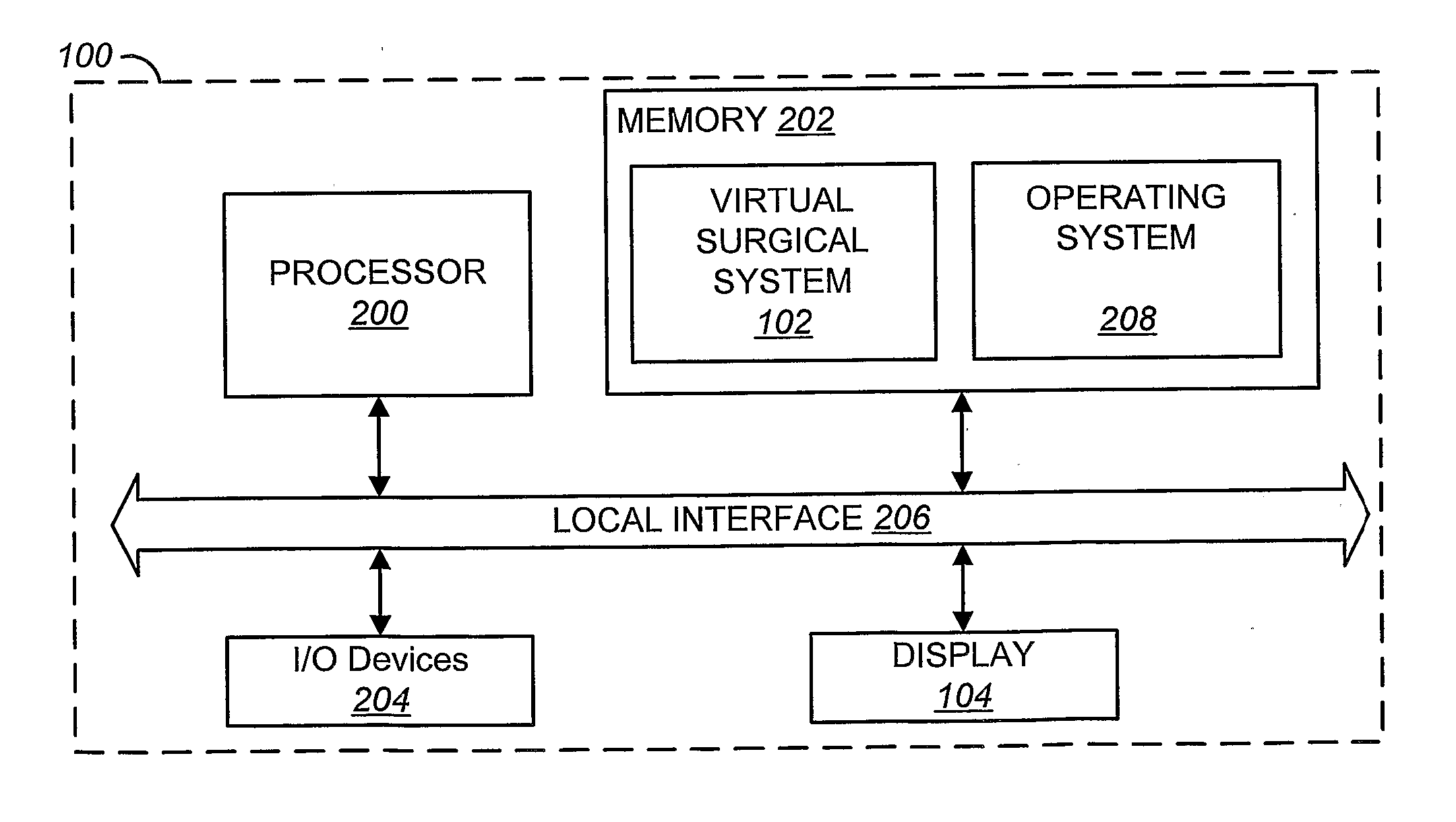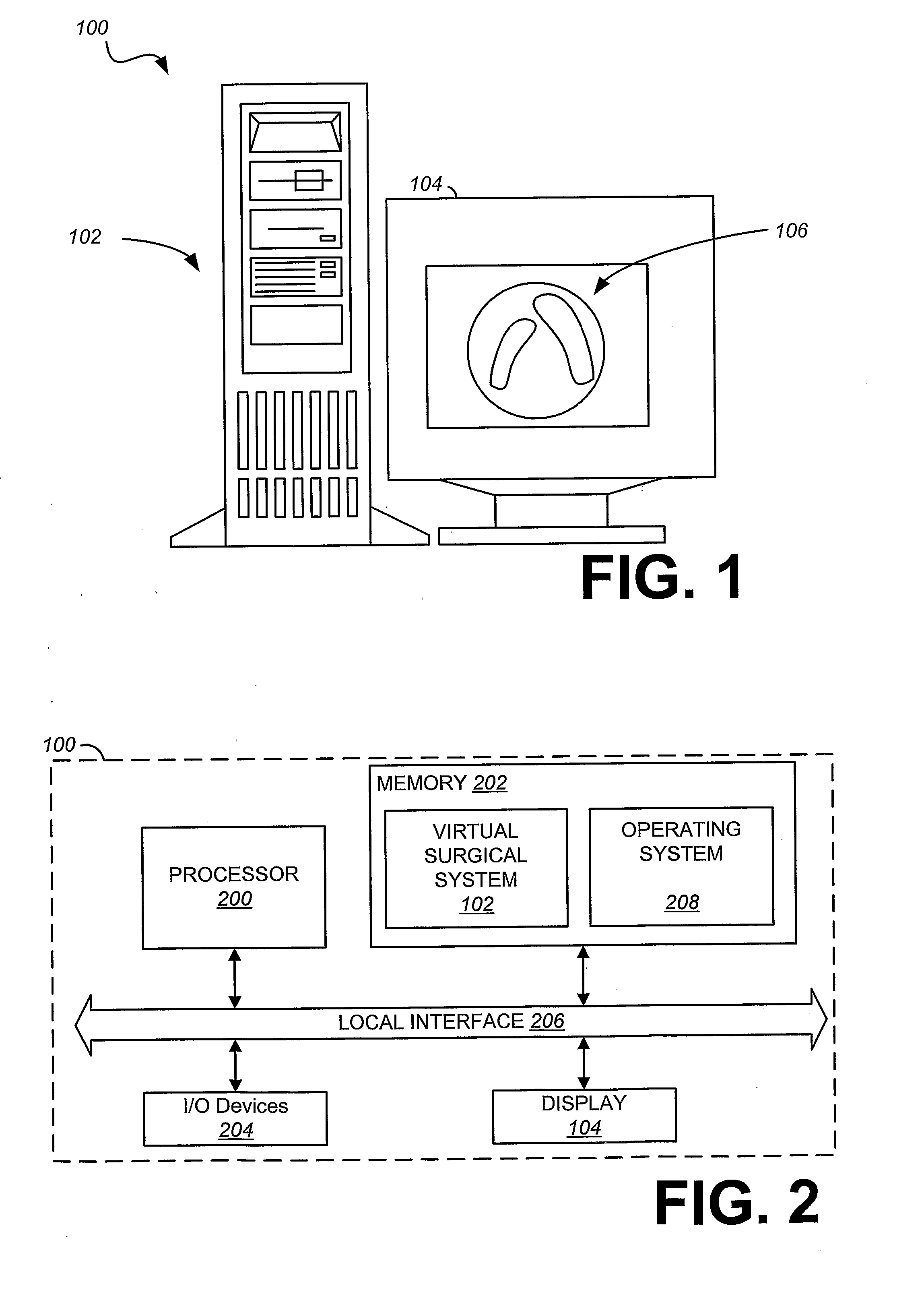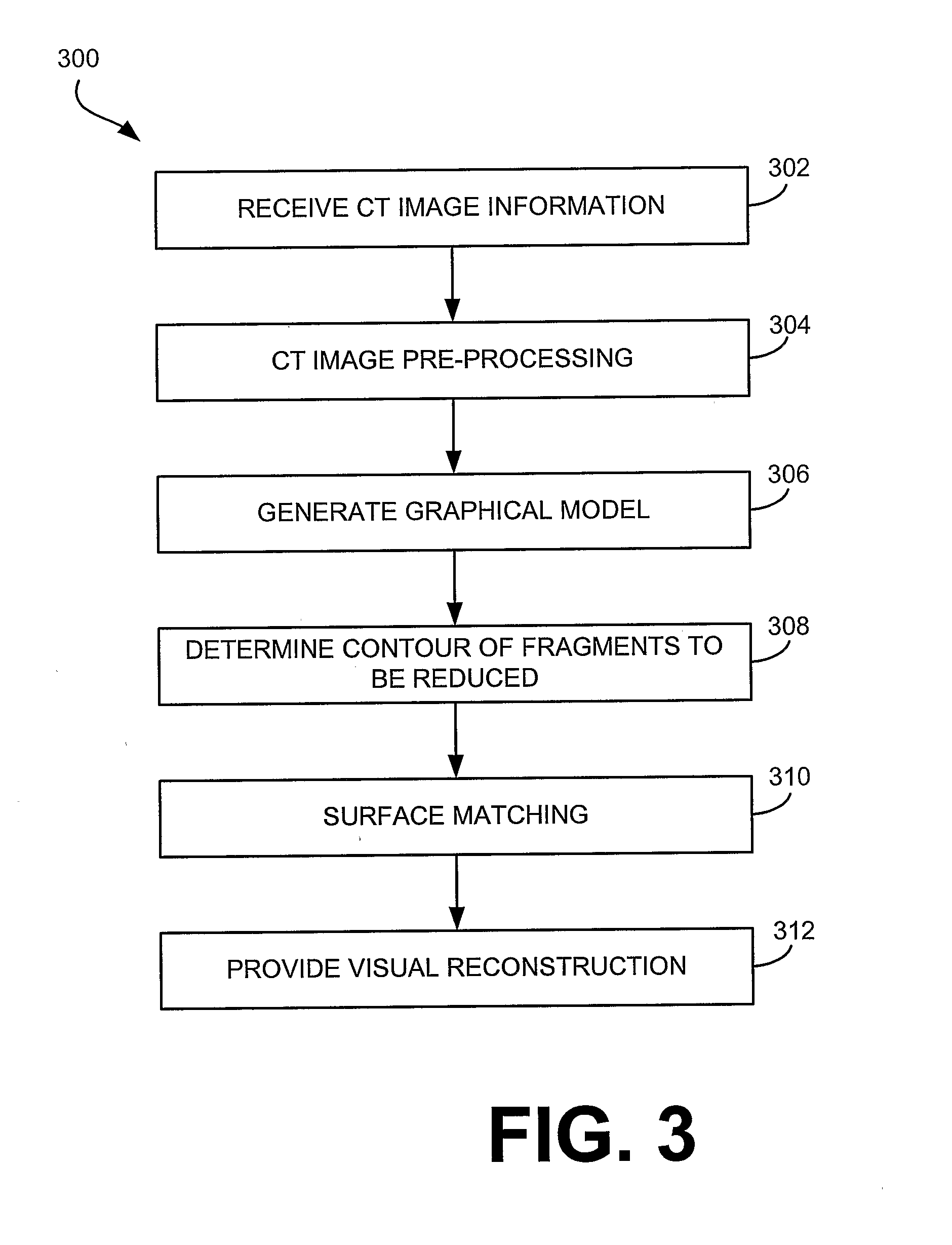Virtual Surgical System and Methods
a virtual surgery and computer system technology, applied in the field of virtual surgery implementations of computer systems, can solve the problems of bone fragment malalignment, bone fragments that are difficult to restore the form and function of craniofacial skeleton, and require a degree of precision
- Summary
- Abstract
- Description
- Claims
- Application Information
AI Technical Summary
Problems solved by technology
Method used
Image
Examples
embodiment 300
[0043] As depicted in the method embodiment 300, step 302 includes receiving information representing at least one digital image of fragmented bone elements. For example, one input of digital image information to the virtual surgical system 102 may be a sequence of grayscale images of a fractured human mandible. In the present embodiment, the images are two-dimensional (2-D) computer tomography (CT) image slices. In one embodiment, exemplary dimensions and color features for the CT image slices may be 150 millimeter (mm)×150 mm with an 8-bit color depth. The digital image information may be provided, for example, across local interface 206 from input devices 204.
[0044] Step 304 includes pre-processing the digital image information (eg. the CT image). Specifically, as depicted in FIG. 4, in one embodiment, a series of image pre-processing tasks 304a-304b are undertaken by the virtual surgical system 102 before using the surface matching algorithms to obtain the desired goal of reduct...
embodiment 500
[0055]FIG. 5 depicts a user-assisted, interactive contour detection embodiment 500, which may be performed to determine the contour as illustrated in step 308 of FIG. 3. At step 308a, a user is iteratively guided through one or more graphical interfaces to select (e.g. via a mouse, stylus, or other input means) end points of a fracture contour in the CT slices. Exemplary user interfaces for the interactive contour detection are described in more detail below with respect to FIGS. 12-14. However, the contour points may be selected, for example, upon the user selection (e.g. a mouse button click, key press, etc.) of a particular area (e.g. a pixel, or group of pixels) according to the position of a cursor (e.g. guided by a mouse or other input device) over the two-dimensional CT scan image. The user performing the selection may, for example, be a surgeon or one skilled in performing such operations. The virtual surgical system 102 collects the data corresponding to the position of the...
PUM
 Login to View More
Login to View More Abstract
Description
Claims
Application Information
 Login to View More
Login to View More - R&D
- Intellectual Property
- Life Sciences
- Materials
- Tech Scout
- Unparalleled Data Quality
- Higher Quality Content
- 60% Fewer Hallucinations
Browse by: Latest US Patents, China's latest patents, Technical Efficacy Thesaurus, Application Domain, Technology Topic, Popular Technical Reports.
© 2025 PatSnap. All rights reserved.Legal|Privacy policy|Modern Slavery Act Transparency Statement|Sitemap|About US| Contact US: help@patsnap.com



